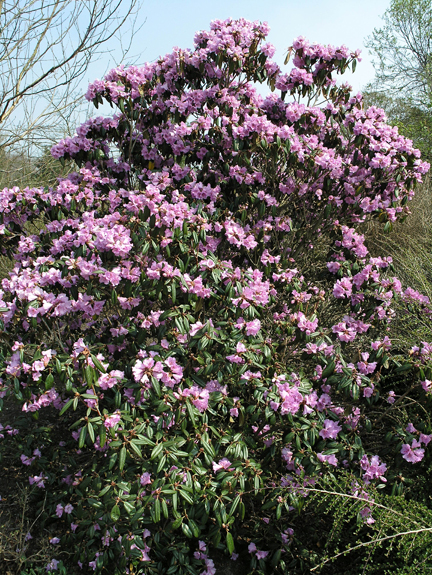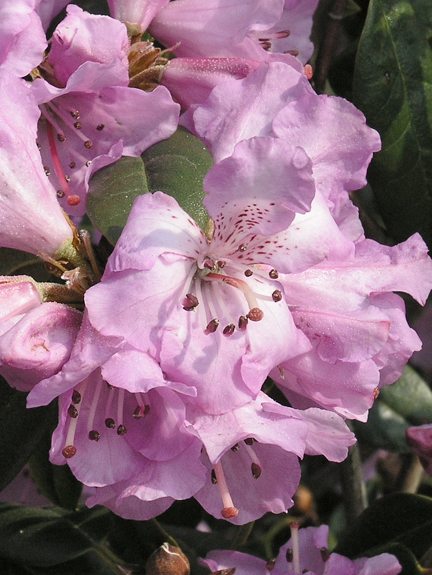| General Description | A dense semi‐evergreen shrub that has masses of pink blooms at the terminus of every branch. No leaf colour change is evident in autumn.
|
| ID Characteristic | Bright pink clusters of flowers at the end of the branch on every branch. When in bloom the entire plant is covered in flowers. Leaves are shiny and glabrous. |
| Shape | Large massing shrub which is quite dense and multi-stemmed.
Informal in shape. |
| Landscape | It may be evergreen, semi-evergreen or even deciduous in the more northerly reaches of its existence. It is a back of the border or woodland edge plant since it is quite a massive plant.
|
| Propagation | Cuttings should be taken during the month of August and gentle humid heat bottom heat and under mist) is required for the rooting process to occur. This technique will allow the rhododendrons to flower after 2 years. From seed it will take the plant 3-4 years to flower. |
| Cultivation | Cultivation of rhododendrons is somewhat problematic since several cultural conditions must be met to ensure their success. Acidic soil with a pH of 4.5‐5.5, moist conditions, and high concentrations of organic matter are all required. Severe cold weather can easily kill this species of rhododendron but it is considered frost resistant. During the winter dry soils usually found in elevated conditions will help ensure its survival. |
| Pests | Powdery mildew is a common disease of most species of rhododendrons, this plant is no exception. Ensure good air flow around plantings to reduce the incidence of this disease. |
| Notable Specimens | University of British Columbia, Vancouver, Canada and The Rhododendron Species Botanical Garden, Washinton, United States of America. |
| Habitat | Mountains in China in open areas at higher elevations. |
| Bark/Stem Description | Smooth red-brown bark, branchlets are scaly.
|
| Flower/Leaf Bud Description | The buds are large compared to the size of the stem and scaly and egg-like in shape. |
| Leaf Description | Leaves are semi‐evergreen depending on climate, and are coriaceious (leathery). 8 cm in length, elliptic, hairless and elepidote on the top side of the leaf and ovate-oblong. On the under side of the leaf it is scaly. Scale size can cause the plant to turn from pale green to rusty brown. |
| Flower Description | The flowers are lilac‐rose to bright pink with crimson or brownish markings on the flower throat. Flowers clusters are in groups of 4‐8 on the terminal branch. It is a 5 petaled flower about 1.75 cm in diameter. |
| Colour Description | The leaves are a deep shiny green and the bark a reddish brown colour.
|


